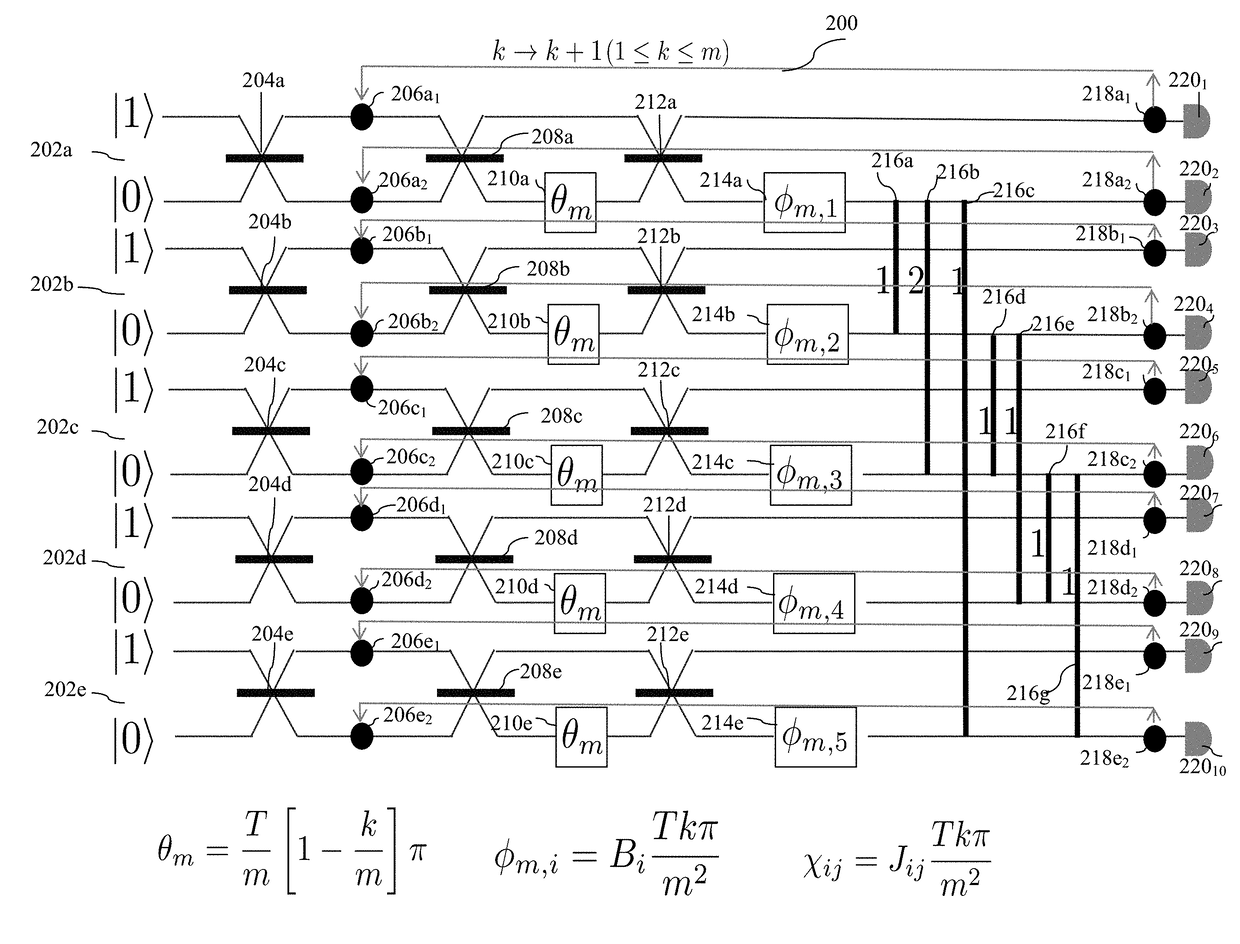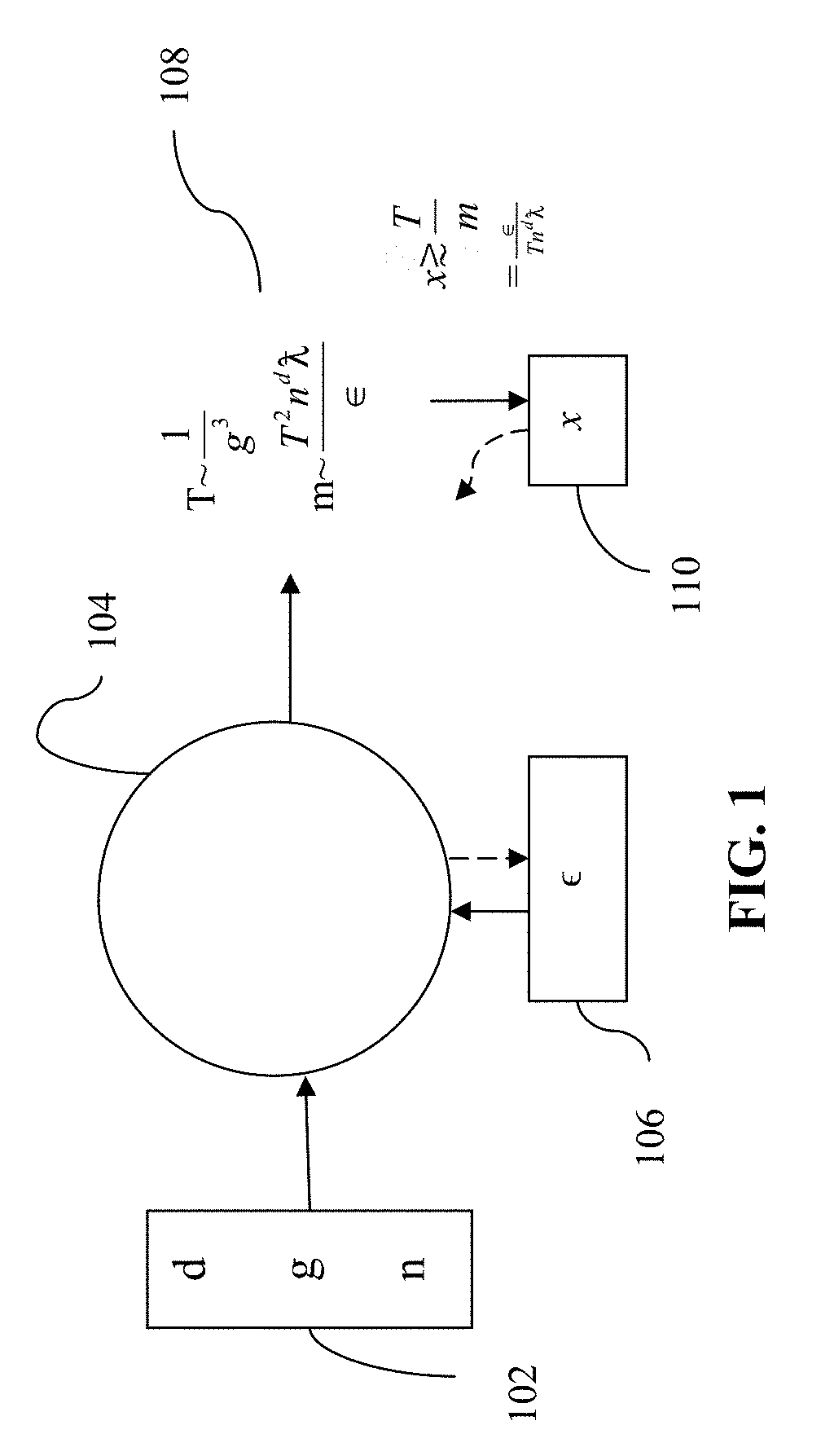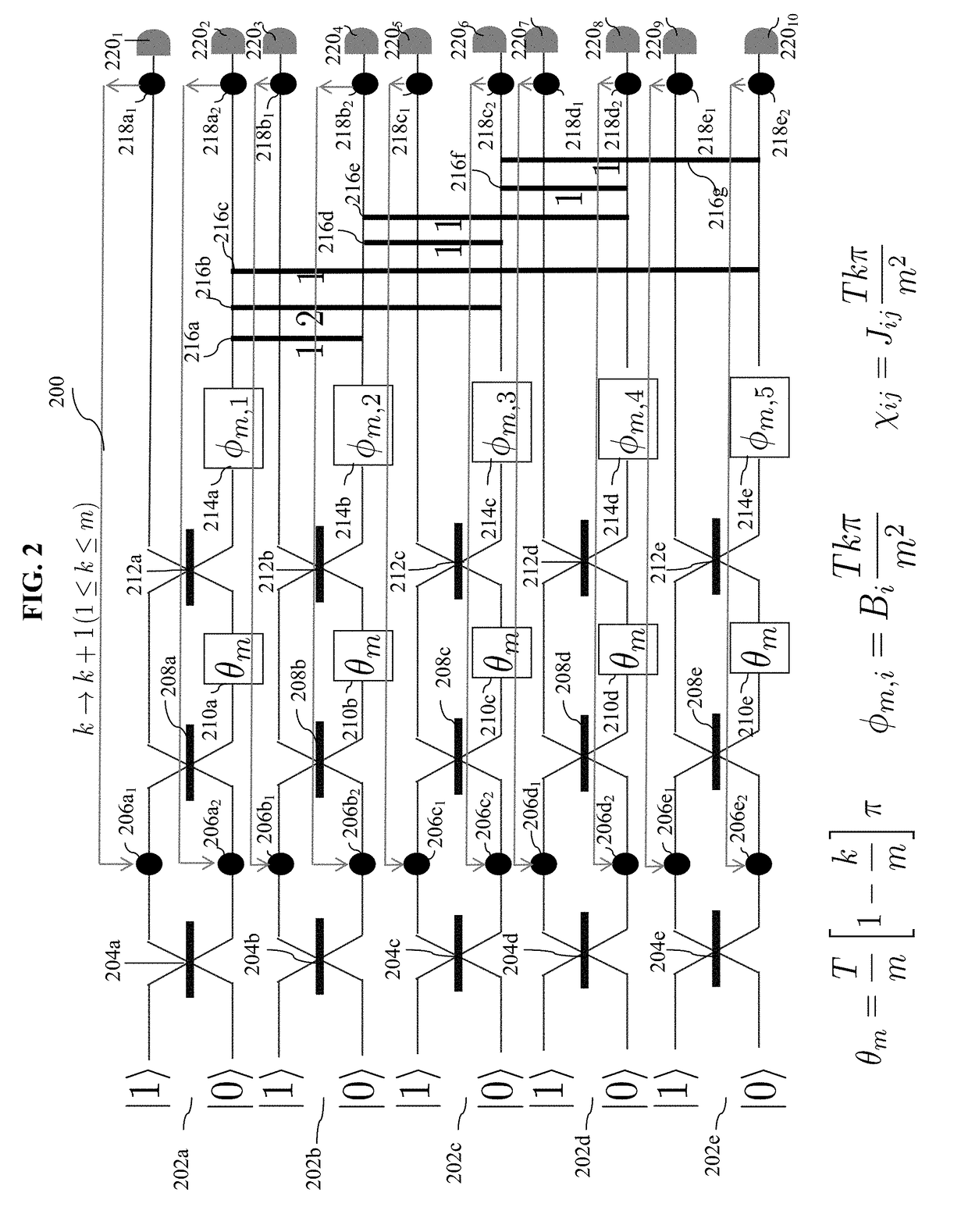Optical ising-model solver using quantum annealing
a solver and quantum annealing technology, applied in computing models, instruments, electromagnetic transmission, etc., can solve problems such as system disrete transitions to high-energy states, arbitrary states cannot be cloned, and build universals
- Summary
- Abstract
- Description
- Claims
- Application Information
AI Technical Summary
Benefits of technology
Problems solved by technology
Method used
Image
Examples
Embodiment Construction
[0027]Devices that can solve the Ising model via quantum annealing—a restricted class of adiabatic quantum computers—have recently gained popularity, since the Ising model can encode many interesting NP hard optimization problems. It is however not yet clear if quantum annealing provides speed up in terms of how the number of computational steps scale as the size of the problem grows, as compared to the best classical algorithms. All quantum annealing architectures realized to date employ ‘matter’ qubits, such as superconducting, Nuclear Magnetic Resonance (NMR) and Bose-Einstein condensates. Even in the absence of a computational complexity advantage, an all-optical quantum annealer is attractive due to both its ability to gain a large constant-factor speedup, and a potentially large power saving, over conventional electronic-computing solutions.
[0028]The Ising model can be used to solve a number of constraint satisfaction problems, which are problems of finding solutions that sati...
PUM
 Login to View More
Login to View More Abstract
Description
Claims
Application Information
 Login to View More
Login to View More - R&D
- Intellectual Property
- Life Sciences
- Materials
- Tech Scout
- Unparalleled Data Quality
- Higher Quality Content
- 60% Fewer Hallucinations
Browse by: Latest US Patents, China's latest patents, Technical Efficacy Thesaurus, Application Domain, Technology Topic, Popular Technical Reports.
© 2025 PatSnap. All rights reserved.Legal|Privacy policy|Modern Slavery Act Transparency Statement|Sitemap|About US| Contact US: help@patsnap.com



